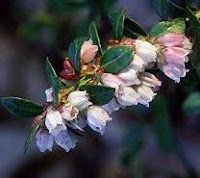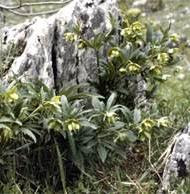 Garden Geranium
Garden GeraniumThe popular garden geranium, genus Pelargonium, grows best in warm, dry climates, where the plant may reach the size of a bush. The common zonal variety is pictured here. Its single or double rounded petals come in many colors.
 Garden Larkspur
Garden Larkspur
 Garden Larkspur
Garden Larkspur The garden larkspur, native to northern temperate regions, is a fast-growing, branching, annual flowering plant, grown for its colorful white, pink, or blue flowers. Reaching a height of 1.2 m (4 ft), larkspur grows best in a sunny location in fertile, well-drained soils. Plants of this genus may be especially susceptible to damage from slugs and snails.
 Garden Nasturtium
Garden Nasturtium
 Garden Nasturtium
Garden Nasturtium The common garden nasturtium, a variety of Tropaeolum majus, is cultivated for its attractive flowers and edible foliage. The nasturtium originally came from South America.
 Golden Poppy
Golden Poppy
 Golden Poppy
Golden PoppyThe golden poppy, also known as the California poppy, is the state flower of California, where it grows wild. Most species of poppy are quite easy to cultivate, providing not only delicate, attractive flowers, but also cooking oil and the tiny, round seeds that adorn many breads and cakes. Commercial bird and cattle feed also make use of poppies.
 Great Lobelia
Great Lobelia
 Great Lobelia
Great Lobelia Belonging to a group of deciduous and evergreen herbaceous shrubs, the great lobelia is cultivated for its fragrant, tubular blue flowers. Lobelias grow best in sunny locations with moist, well-drained soils and are especially well-suited for native gardens or areas in and around ponds and streams.
 Hawthorn
Hawthorn
 Hawthorn
Hawthorn The hellebore, a perennial flowering plant, is cultivated for its attractive flowers. Some species of hellebore can produce severe facial deformities in the offspring of animals that eat the plant.
 Hibiscus
Hibiscus
 Hibiscus
Hibiscus The hibiscus is the common and scientific name for a genus of deciduous and evergreen trees and shrubs grown primarily for their large, showy, colorful flowers. The hibiscus is cultivated throughout warm, temperate regions of the northern hemisphere and grows best in sunny locations in very fertile, well-drained soils.
 Hollyhock
Hollyhock
 Hollyhock
Hollyhock The attractive hollyhock, Althaea rosea, borders the gardens and fences of Europe, the United States, and its native Asia during late summer.
 Horse Chestnut
Horse Chestnut
 Horse Chestnut
Horse Chestnut The bud growing at the end of this horse chestnut twig is called a terminal bud. Lateral buds are those that grow along the length of the stem. The bud itself is the embryonic shoot of the plant and contains the undeveloped flowers, shoots, or stems.
 Huckleberry
Huckleberry
 Huckleberry
HuckleberryThe huckleberry, native to the temperate parts of North America, is cultivated for its flowers and fruit. Huckleberry bushes are often found growing on decomposing stumps in wooded areas.
 Hydrangeas
Hydrangeas
 Hydrangeas
Hydrangeas Hydrangeas include a number of deciduous shrubs and evergreen vines cultivated for their distinctive and colorful domed flower heads. Native to Asia and the Americas, these plants can grow in sunny or shaded locations with moist, well-drained soils.
 Ipecac
Ipecac
 Ipecac
Ipecac Native to South American forests, ipecac is a plant that yields two alkaloid drugs. One of them, emetine, is used to induce vomiting.
 Ivy
Ivy
 Ivy
Ivy Ivy, a perennial, woody-stemmed, evergreen plant of the genus Hedera, is commonly cultivated as a self-clinging, climbing plant. Ivy works well for use as ground cover or a cover for brick walls or trellises.
 Japanese Pagoda Tree
Japanese Pagoda Tree
 Japanese Pagoda Tree
Japanese Pagoda TreeThe Japanese pagoda tree, a deciduous tree native to China and Korea, is also known as the Chinese scholar tree because it is traditionally planted by the graves of Chinese schoolmasters. Several varieties of this tree that differ in size, flower color, and hardiness are cultivated worldwide.
 Laurel
Laurel
 Laurel
Laurel The laurel, or bay, is cultivated primarily for its foliage, called bay leaves, which are used as a seasoning in cooking. Producing yellow flowers and a black fruit, the laurel prefers shaded areas with fertile, well-drained soils.




